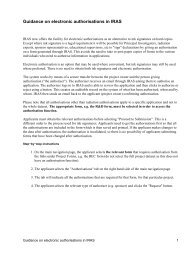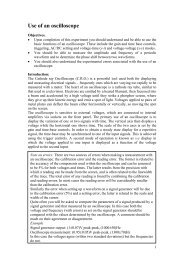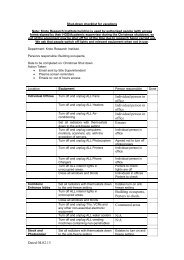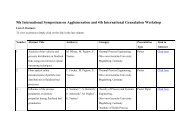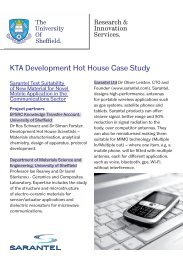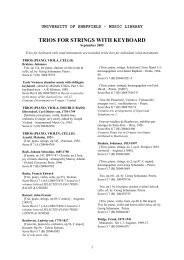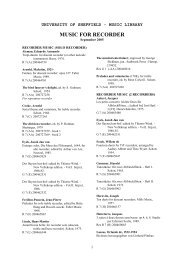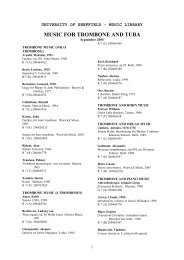Huron & SNAP Documentation
Huron & SNAP Documentation
Huron & SNAP Documentation
You also want an ePaper? Increase the reach of your titles
YUMPU automatically turns print PDFs into web optimized ePapers that Google loves.
Signal Generation via MatLab Scripts<br />
Caution<br />
THE ENGINEERING TOOLS<br />
rolloff with increasing frequency. These test signals are safer<br />
for electroacoustic systems and are easier on the ear than white<br />
noise.<br />
The third variety of test signals is a type of swept sine wave.<br />
These signals (sNN_MMMk.sim, where NN is the number of<br />
octaves of the sweep, and MMM is the length of the signal in<br />
kilosamples) contain a sinusoid who's instantaneous frequency<br />
sweeps up at a constant number of octaves per second until it<br />
reaches the Nyquist frequency (in this case, half the sampling<br />
frequency). This imparts the signals with two important<br />
properties:<br />
1. Pink spectrum. These signals will not damage tweeters in<br />
loudspeakers if used at moderate volumes.<br />
2. Harmonic distortion rejection. Because the time duration<br />
between the instantaneous excitation frequency and its<br />
harmonics is constant in the test signal, any harmonic<br />
distortion in the system under test will manifest itself as<br />
narrow peaks very late in the impulse response. This<br />
typically corresponds with a region containing no relevant<br />
information, and so it can be truncated (removed entirely)<br />
from the measurement. To take advantage of this property<br />
select a test signal of much greater duration than the<br />
response of the system under test.<br />
These properties mean that the swept sine test signals are the<br />
best choice for electroacoustic measurements, which can have<br />
large harmonic distortion components.<br />
When using these test signals, it is necessary to choose not only<br />
the appropriate length, but the number of octaves to be covered.<br />
This will depend on the frequency range of interest, and the<br />
physical capabilities of the test source. To find the lowest<br />
instantaneous frequency in a given test signal, divide the sample<br />
rate by:<br />
2 (NN+1)<br />
The Matlab function swptsine.m in the huronmat<br />
subdirectory will allow the creation of your own variations of<br />
these test signals. Type “help swptsine” in Matlab for<br />
more details.<br />
CAUTION: Using a sweep of too many octaves could cause<br />
damage to loudspeakers. These signals contain low frequencies<br />
at very high levels, and can cause excessive cone displacement<br />
in speaker drivers. If in doubt start with a signal of fewer<br />
octaves and visually inspect the cone displacement. The low<br />
frequency limit of your tests will depend on the physical<br />
capabilities of your speaker. Using lower volume levels can<br />
alleviate this problem.<br />
HURON TECHNICAL MANUAL PAGE 202





